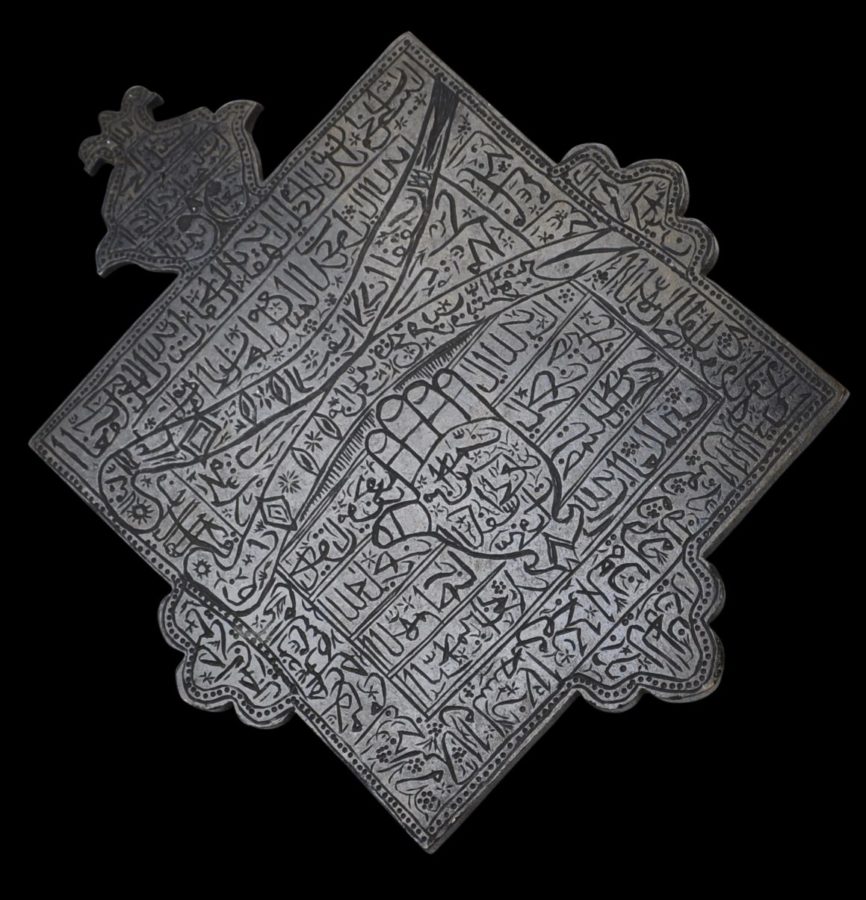This stamp of rectangular form with crescent-like embellishments is made of engraved bronze and is from the Ottoman world (possibly the Balkans or perhaps Ottoman Turkey itself.) It dates to around the 18th century.
Such stamps are rare. Almost none have been published.
The face of the stamp is engraved with talismanic symbols, Koranic-related verses and prayers in the mirror image.
A baluster-form, rectangular metal flange by which to hold the stamp and impress it, is soldered to the back.
It is likely that such stamps were used to print pieces of paper with motifs and Koranic-related verses that will provide the possessors with talismanic protection. Paper so imprinted could be rolled up and kept inside a pendant silver container of similar (known in Arabic as a hirz). Also, it is possible that such stamps were used to imprint textile maybe for use in flags and banners or even talismanic shirts that might have been worn beneath armour, again as a protective device for the wearer.
The stamp is engraved with several motifs including the the Hand of Fatmiah, and two bifurcated or split-bladed swords (Dhulfiqar or Zulfiqar) which also was a popular amuletic motif, and which tends to be associated with Ali. But this association need not definitively imply that this stamp is a Shia piece.
The stamp is in excellent condition. The final image shows a photographic negative of the face of the stamp so that the script can be read correctly. This is how an imprint of the stamp will look.
References
Leonie, F. (ed.)., Power and Protection: Islamic Art and the Supernatural, Ashmolean Museum, 2016.
Maddison, F. & E. Savage-Smith, The Nasser D. Khalili Collection of Islamic Art: Science, Tools & Magic, Part One: Body and Spirit, Mapping the Universe, The Nour Foundation, 1997.
Pers. comm., Seif El Rashidi, London, July 2019.





